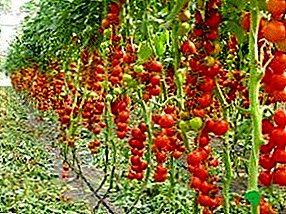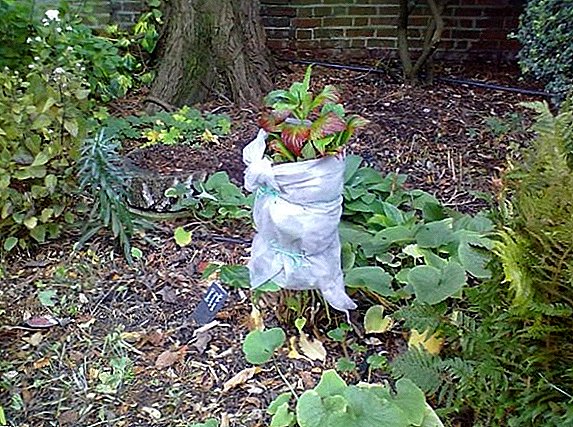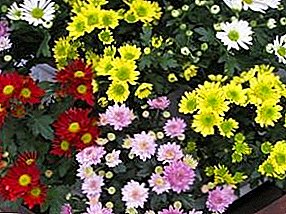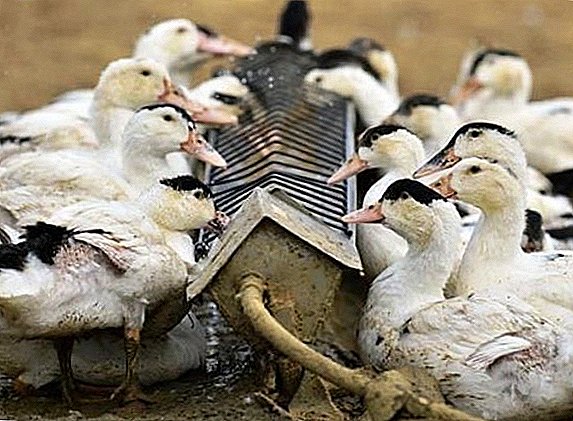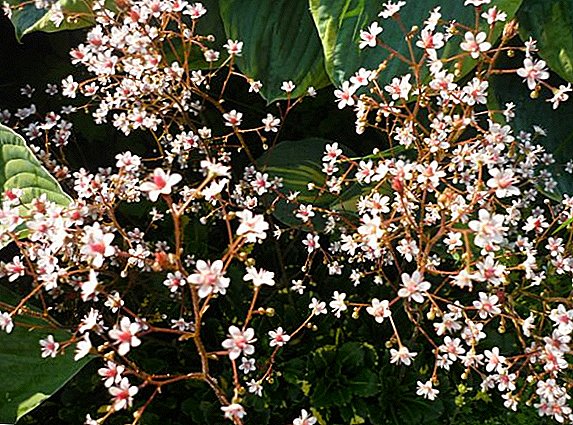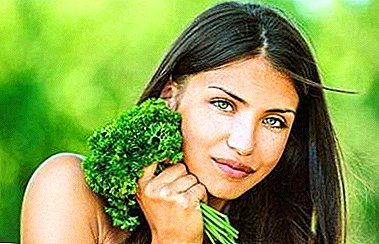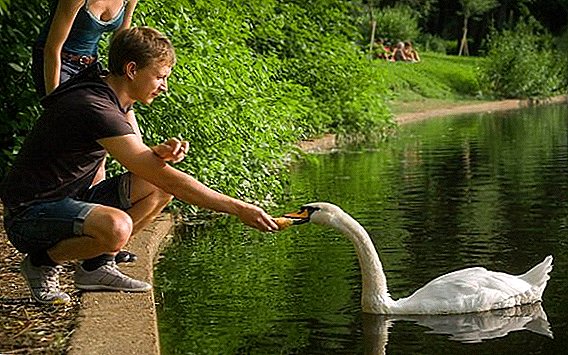 Observing and caring for the majestic, graceful swan is a pleasure for many. It is not surprising that some people want to keep swans at home only for decorative purposes. However, before deciding to take such a step, you need to understand whether you can provide the swans with conditions that are as close to natural as possible. It is necessary to take into account the dimensions of the bird (the largest of the waterfowl in our time), its constant need for access to a large reservoir, monogamy and other features of birds.
Observing and caring for the majestic, graceful swan is a pleasure for many. It is not surprising that some people want to keep swans at home only for decorative purposes. However, before deciding to take such a step, you need to understand whether you can provide the swans with conditions that are as close to natural as possible. It is necessary to take into account the dimensions of the bird (the largest of the waterfowl in our time), its constant need for access to a large reservoir, monogamy and other features of birds.
What types can be bred at home
Swan belongs to the waterfowl of the duck family. In total, there are seven species of these birds, but for home keeping, the most common are the whooper, the mute swan or the black swan.
- Whooper swan Majestic, large bird with snow-white plumage. It has a calm temperament, but only if aliens do not appear in the field of view, therefore we must contain the Whooper should be separated from other swans and poultry. For the content you need a reservoir nearby or an artificial pond. They can tolerate frosts down to -30 ° C, but at this time they need a poultry house.

- Mute swan This species is very similar in appearance to the clicker, but it has a different color of the beak, constantly raised wings. He also makes a characteristic hissing sound, for which he received his nickname. The bird has a more relaxed disposition than the whooper, but also does not tolerate the close proximity of other birds. For the maintenance of the house necessarily need a spacious reservoir.

- Black Swan. Very beautiful and rather rare look. It has excellent adaptive abilities, because of what it is chosen for maintenance in private farmsteads. With good conditions in captivity can live 20-30 years. This species of birds has a very beautiful, deep voice, which they actively communicate with each other, express greetings, irritation and other emotions. Black swans are peace-loving and friendly, they are good to other species of birds, but you should not settle them together with aggressive species (for example, with spines). They have a fairly loose plumage, so when the frost is large (below -20 ° C) they need to be sheltered.
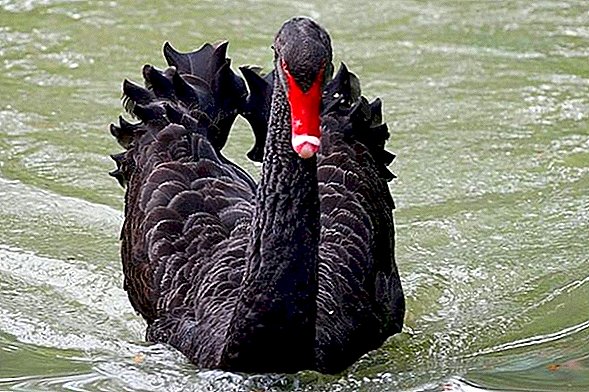
Selection of a pair
As you know, swans are paired birds that remain with their "half" for many years. In nature, the choice of a pair occurs at the age of 3-4 years, when males and females begin puberty and they are ready to begin the mating season.
Did you know? Very rarely, but still it is possible that two males form a pair of black swans. In the mating season, they attract the female for laying eggs, and then expel her and hatch and take care of the brood.
If you have acquired two young birds that are not a pair, there is a high probability that they will not “attract” each other and will not form a pair, even if there is no other option. It is recommended to purchase an already formed pair in a zoo or in private farmsteads, where these birds successfully contain more than one year.  However, this possibility is not always. If you buy young birds separately, choose birds of the same age or that the female was slightly younger than the male, but not vice versa. The best time for the purchase of birds is the end of winter, at which time swans are beginning to form pairs in nature.
However, this possibility is not always. If you buy young birds separately, choose birds of the same age or that the female was slightly younger than the male, but not vice versa. The best time for the purchase of birds is the end of winter, at which time swans are beginning to form pairs in nature.
Important! It is advisable to populate a couple in an open-air cage at the same time to reduce the likelihood of conflicts. By the previously bought male, the winch can be hooked without fear, but the sharing of the male to the female can turn into aggression on her part.
When buying a pair, you can distinguish a male and a female only in size, since there are no other differences in the appearance of the swans. Females are smaller and lighter than males, they have smoother outlines of the neck and head, smaller wingspan. 
Arrangement of the house
For a comfortable stay on the plot of birds, birds will definitely need a house. If possible, you can build summer and winter versions of the home. Summer house may look like a small booth with a double-slope roof, fixed near the shore of the reservoir.
Constructing a poultry yard, learn how to make a chicken coop, a goose, a duckling, a pigeon house, a turkey-hen, a poultry house, and also a house for indoutok and mandarin ducks with your own hands.
On the floor area should be at least 1 square. m one pair, height - about 80 cm, the windows can not be done. The dwelling will protect the birds from the heat and weather. But in the winter you will need to build a more solid housing.
Although the swans migrate in part, which indicates their good adaptation to fairly low temperatures, the constant strong cold can be disastrous for them. In winter, the bird should have a warm, dry, spacious room up to 2.5 square meters. m for a couple of swans. The height of the building must be at least 2 m, the windows at a height of 1.5 m from the floor with access to the south side.  Ideally, if the house is made of wood, with insulated, plastered walls. You can maintain the temperature at + 16-18 ° C with the help of electric heating, you also need to provide lighting to maintain the length of the day at 14-16 hours.
Ideally, if the house is made of wood, with insulated, plastered walls. You can maintain the temperature at + 16-18 ° C with the help of electric heating, you also need to provide lighting to maintain the length of the day at 14-16 hours.
The floor should be covered with a thick layer of bedding (not less than 10 cm) of hay or straw. Separately, there should be tanks with water at room temperature, where the birds could swim.
If you want your pets to feel comfortable even in the most severe frosts, keep them on the litter. Familiarize yourself with the use of litter for chickens and pigs.
Features of arrangement and care:
- weekly litter needs to be changed;
- once in 2-4 weeks it is necessary to disinfect the house;
- exhaust or ventilation must necessarily work, in the absence of these systems it is necessary to regularly ventilate the room;
- containers with water should stand separately so as not to create dampness and sputum in the main territory;
- wooden troughs can be used as feeders.
 Disinfection house
Disinfection house
Paddock for walking
In the water, the swans are very agile and agile, it is difficult to keep up with them, but on land their dexterity and grace leave much to be desired, because of which the birds spend most of the time on the water surface, and they are chosen relatively rarely on land. But they still need a small area for hiking.
This may be the area near the reservoir, where in summer birds could pick grass and search for land animals. In winter, the territory can be used for walks, but before you release the swans from the aviary, the paddock will need to be cleared of snow and ice and sprinkled with straw.
Take a closer look at all the features of making paddock for chickens with your own hands.
Water
A prerequisite for the maintenance of swans on the plot is the presence of a natural or artificial reservoir. Ideally, if you have access to a pond or lake - in this case, part of the reservoir should be enclosed with a net so that the swans do not float away.  If there is none, it is necessary to equip an artificial reservoir. It should be placed in a shallower place so that less water evaporates. The pond should have a gentle slope on at least one side, the depth should be about 1 m. The water in the pond should be replaced or equipped with a drain, as the swans will carry ground and dirt, down and feathers, and possibly remnants of food.
If there is none, it is necessary to equip an artificial reservoir. It should be placed in a shallower place so that less water evaporates. The pond should have a gentle slope on at least one side, the depth should be about 1 m. The water in the pond should be replaced or equipped with a drain, as the swans will carry ground and dirt, down and feathers, and possibly remnants of food.
If the water is not changed, it can rot and bloom, becoming a source of unpleasant odor and a hotbed of bacteria. It is necessary to plant algae and underwater plants in the pond, it is also possible to populate it with fish, crustaceans, frogs and other living creatures.
You will certainly be useful to learn how to build a pond on the site with your own hands.
In winter, a pond (both natural and artificial) will require care. It will be necessary to constantly break the ice into parts of the water surface, in the artificial reservoir, you can install a compressor that will constantly drive water, not allowing it to ice. 
What to feed at home
In the wild, swans live in open waters where they find food of plant and animal origin. Swans are omnivores: with the help of a long neck, they find roots and green parts of plants in shallow water; they do not mind eating small fish, frogs, mollusks and other small invertebrates (crustaceans, daphnia, snails, etc.).
Important! In the absence of contact with water (even in winter), membranes on the legs of swans crack and dry.
On land, birds make up the ration of birds, cereals, and animal food (worms, small lizards, larvae). Swans have a very good appetite - they can eat up to 1/4 of their own weight per day. Under stressful conditions (molt, change of habitat or weather) the amount of food increases.
When keeping a swan on the household farm, one should adhere to the following rationality bases: 10% should be cereals, another 20% is given for food of animal origin, the rest - green fodder. The swan is fed in the morning and evening. In this case, the bird must have access to the reservoir and lawn for self-extraction of food. 
Summer bird diet:
- 500 g of green fodder (grass chop, vegetables);
- 230 g of fish;
- 250 g of cereals (germinated millet or barley, bran);
- 20 g of mineral dressings (chalk, bone meal).
Did you know? During flights, the swans reach speeds of up to 90 km / h, rising to heights of up to 8 thousand meters.
In winter, the ration proportions are as follows:
- 700 grams of cereals (bran, oats, barley);
- 300 g of root crops (beets, carrots);
- 20 g of meat or fish products;
- 20 g of mineral dressings.
 Swans should also not be given compound feeds intended for other agricultural birds (ducks, geese, chickens), since their dietary requirements are different.
Swans should also not be given compound feeds intended for other agricultural birds (ducks, geese, chickens), since their dietary requirements are different.For obvious reasons, swans should not offer purely human delicacies: industrial sweets, smoked, salty foods, sausages and sausages, as they, firstly, are not digested, and secondly, violate the microflora and cause strong inflammatory processes. In spite of the fact that swans will willingly eat similar products, it is impossible to give them to the bird.
Important! Contrary to common practice, feeding swans with baked goods is very dangerous - it threatens with indigestion and even the death of a bird. It is especially dangerous to give feathery tainted bread: with traces of mold, affected by pests and fungi.
Another important rule when feeding swans: all grains need to be germinated or steamed before feeding, as dry grain injures the digestive organs of the bird. For steaming, the grain mixture needs to be filled with hot water and left for 3-4 hours, cold water is used for germination, and the time is increased to 11-15 hours.  For the preparation of feed for swans, you can use the following composition:
For the preparation of feed for swans, you can use the following composition:
- 600 g of cereals: 150 g of steamed oats, 150 g of boiled peas, 150 g of millet, 40 g of steamed barley, 35 g of boiled millet, 30 g of wheat bran and 45 g of oatmeal.
- 300 g of juicy green fodder: 150 g of fresh carrots, 70 g of boiled potatoes, 50 g of fresh cabbage, 20 g of fresh beets, 10 g of onions.
- 100 g of animal feed: 30 g of minced meat, 70 g of minced fish.

How birds tolerate winter cold
Birds tolerate cold to -15 ° C quite well, some up to -30 ° C, thanks to a large supply of fat, a thick layer of feathers and down, as well as a greasy lubricant that makes the feather cover waterproof. They have no nerve endings on their legs, so they cannot freeze their paws.
Still, with strong and long frosts, swans need shelter, because under natural conditions they simply move to a body of water that is not covered with ice, or migrate to more southern regions. AT the winter months need to adhere to the correct diet, the bulk of which is grain.  It is also necessary to monitor the surface of the reservoir and regularly break the ice on it. If you notice that the swan is sitting motionless on the ice with its head folded in its wings, then you should not panic. This is the natural pose of a bird in the cold season, which allows you to relax, saving energy and heat.
It is also necessary to monitor the surface of the reservoir and regularly break the ice on it. If you notice that the swan is sitting motionless on the ice with its head folded in its wings, then you should not panic. This is the natural pose of a bird in the cold season, which allows you to relax, saving energy and heat.
Did you know? In Russia, fried swans were a favorite delicacy on the royal table. In addition to this dish, there was another feathered exotic: herons, cranes, sandpipers and larks.
Before buying a pair of beautiful birds, you should evaluate your real possibilities to ensure them the right conditions. Indeed, in the overwhelming majority of cases, swans want to keep at home for the sake of a decorative purpose, and to look at these large, graceful, majestic birds, trapped in a tight space, will not take any pleasure. But if it is possible to create suitable conditions for the birds, your efforts will more than pay off!





